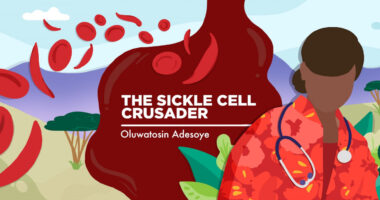Racial Bias a Reality for Young Patients with Sickle Cell Disease, Study Shows

Negative experiences with a racial connotation are common among adolescents and young adults with sickle cell disease (SCD), Connecticut Children’s Medical Center researchers showed in a recent study.
In the United States, sickle cell affects mainly African-Americans, and is historically perceived in the medical community as a “black disease.” However, little is known about the implications of racial bias among young individuals with sickle cell disease.
“Broadly defined, racial bias is negative beliefs, attitudes, or behaviors toward a group of people based on racial differences,” the researchers said.
Experiences with racial bias in a community or medical setting can have a significant impact on a person’s psychological and physical outcome. It may change the way young people perceive themselves and contribute to behavioral problems, but it may also exacerbate the symptoms of chronic illnesses. Recognition of these experiences is critical to enhance care and reduce disease burden in young sickle cell patients.
In the study, titled “Describing Perceived Racial Bias Among Youth With Sickle Cell Disease” published in the Journal of Pediatric Psychology, a team interviewed 20 young patients diagnosed with the disease to evaluate racial bias experiences and their impact in this population.
The participants, between 13 and 21 years old, were interviewed using the Perception of Racism in Children and Youth scoring (PRaCY). The questionnaire was designed to collect information on the prevalence, attribution, and emotional and coping responses toward situations of racial bias.
All participants reported experiencing community racial bias, and four participants reported medical racial bias experiences. A total of 104 racial bias events were described, which were classified into four categories: who the perpetrator was; the type of racial bias; youth behavioral reactions (confrontational or avoidant); and emotional response.
About 50.5% of the participants reported racist events caused by authority figures, and 23.7% described events triggered by people of similar age. In addition, 50.6% of the events were perceived by participants as consciously carried out by the perpetrator.
“The number of events of racial bias perpetrated by authority figures is concerning and has considerable school and community implications,” the researchers said.
These experiences were associated with several negative emotions, including generalized dissatisfaction with life in 27.9% of participants, anger in 20.9%, inferiority in 16.3%, and anxiety in 9.3%. This finding suggests that these racial events can severely impact young patients’ lives and affect their health outcomes.
The researchers suggest that “pediatric psychologists routinely inquire about racial bias experiences for youth with SCD and the impact that these experiences have on their medical care and well-being.”
Behavioral and emotional racial bias reactions that may have a negative impact on the quality of life or interfere with medical care of these patients should also be addressed, they said.






